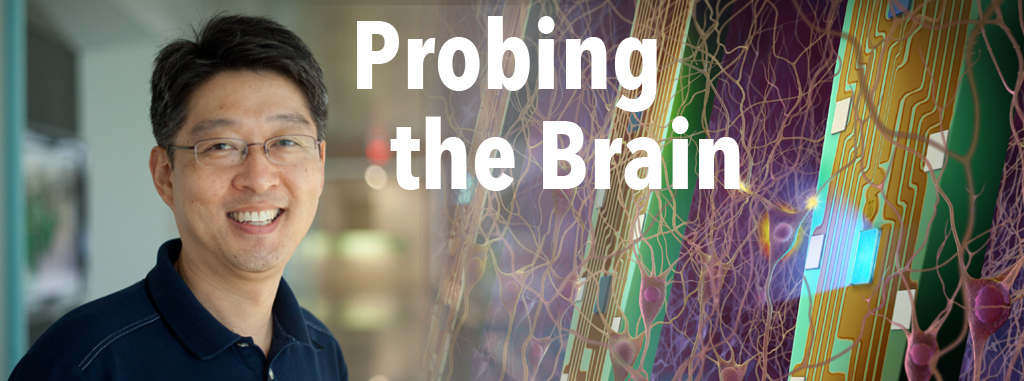Novel collaboration to probe brain activity in unprecedented detail
A pilot program will bring together researchers from different universities to collaborate on advancing research that may lead to a better understanding of the human brain.

 Enlarge
Enlarge
A pilot program at the University of Michigan will regularly bring together researchers with complementary expertise from different universities to collaborate on advancing research that may lead to a better understanding of the human brain and diseases that affect it.
“As neuroscience becomes increasingly cross-disciplinary, world-class experts from various disciplines — sometimes from different institutions — need to come together to address technical and conceptual barriers to progress,” said U-M neuroscientist Huda Akil.
“And transformative work requires more than just the exchange of ideas. It requires sustained collaborative work in physical proximity to one another.”
Akil, the Gardner C. Quarton Distinguished University Professor of Neurosciences, professor of psychiatry and co-director of the U-M Molecular and Behavioral Sciences Institute, won support for a pilot of the “Dream Team” concept from the Kavli Foundation earlier this year.
She directed the funds to a collaboration between Dr. Euisik Yoon, professor of electrical engineering and computer science, and biomedical engineering at U-M, and Dr. György Buzsáki, professor of neuroscience at the New York University School of Medicine.
Yoon, who is also director of U-M’s Lurie Nanofabrication Facility, has been leading a key development of the Michigan Probe, a revolutionary tiny solid-state microsystem developed at U-M that can be used to probe the inner workings of the brain.
In particular, he has been exploring the use of nano-sized LEDs to control and record the activity of many individual neurons within the brain, measuring how changes in the activity of a single neuron can affect its neighbors.
At his lab at NYU, Buzsáki has focused on deciphering the structure and patterns or “syntax” of neuronal activity that underlies cognitive and other functions.
He is building on work that has shown the numerous self-organized oscillations that the brain generates are related to behaviors, including psychiatric disease or responses to drugs, for example.
The optoelectronic Michigan Probe offers a uniquely powerful approach for studying the mechanisms and operation of these oscillations.
The Kavli Foundation will provide $275,000 over three years, which will leverage funds from U-M and other sources for this project by enabling a deeper and more productive partnership.
Over the course of three years Buzsáki and his team will work hands-on with Yoon’s team to refine the design of the probe while furthering the goals of the neural syntax study.
In addition to the collaboration between Yoon and Buzsáki, a Junior Kavli Scholar will work full time on the shared project.
“The Yoon-Buzsáki collaboration is a perfect example of a Kavli Dream Team,” Akil said. “In the longer term, I believe this approach to encouraging face-to-face collaboration will be able to catalyze progress in many areas of neuroscience, and perhaps to other areas of science as well.”
Yoon and Buzsáki will be featured at the International Conference for Advanced Neurotechnology on June 13-14 at the Gerald Ford Library.
Upcoming Conference on Neurotechnology
Drs. Yoon and Buzsáki will be featured at the International Conference for Advanced Neurotechnology on June 13-14 at the Gerald Ford Library.
Related Stories
Mapping the brain: Probes with tiny LEDs shed light on neural pathways
U-M Leading Neurotechnology ‘Dream Team’ for Brain Research and Education
 MENU
MENU 
